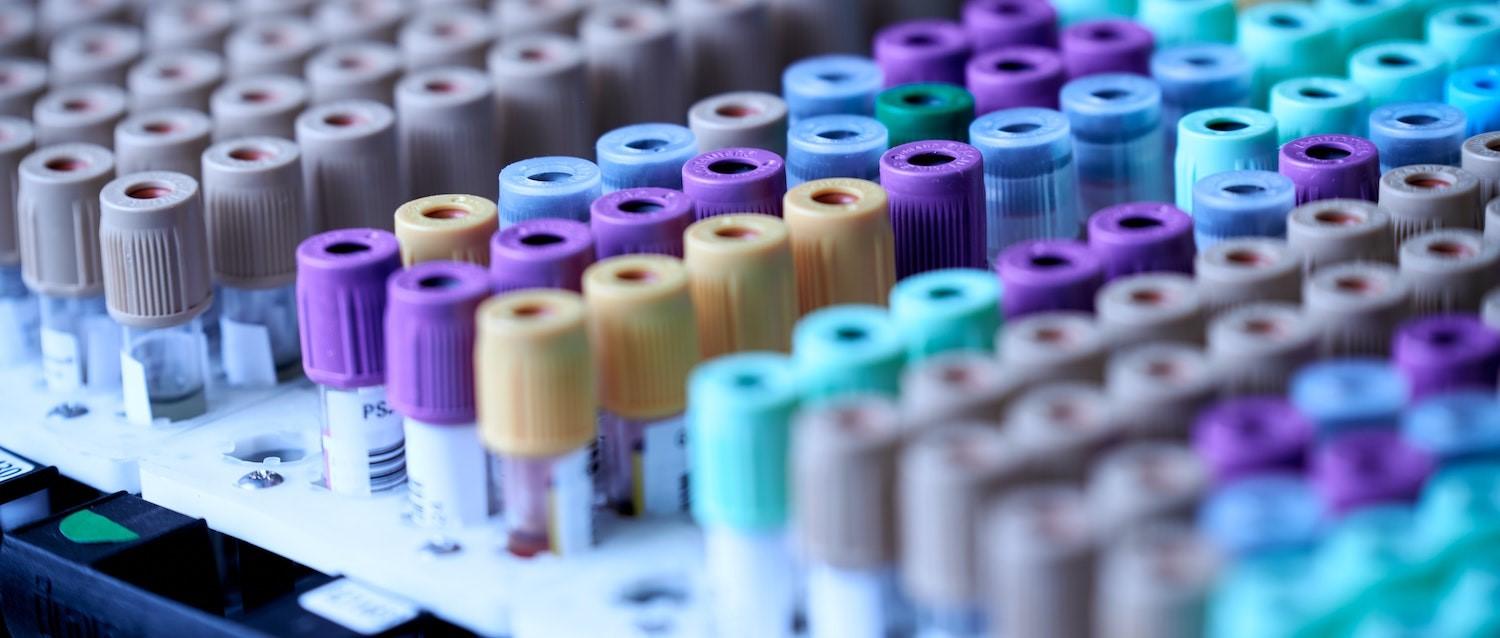
Are the new COVID-19 swab tests accurate?
Peer reviewed by Dr Colin Tidy, MRCGPLast updated by Dr Sarah Jarvis MBE, FRCGPLast updated 26 Nov 2021
- DownloadDownload
- Share
The last year has seen a flurry of announcements about rapid access swab tests. But what are the practicalities of having one of these new tests and should you trust them?
In this article:
First there was the announcement about 'Operation Moon Shot' and the plan to screen up to four million people every day. Next came mass testing in Liverpool and then the rollout of rapid access testing for care homes. Over the same period, we saw dozens of private rapid access tests come on to the market.
At the start of the COVID-19 pandemic, the UK was way behind the curve when it came to testing. The only test available was the PCR (polymerase chain reaction) test, which is still the standard test used at NHS test sites. It involves taking a swab of the nose and throat, which is sent to a laboratory for analysis. For the first few months, there was a global shortage of both the swabs and the reagent used in lab testing for coronavirus. This was resolved within a few weeks, but because PCR tests need to be processed in a laboratory, it takes at least 24 hours to get a result back.
That's why there has been a huge research focus into finding tests which tell you more quickly whether you're infected. Several different types of rapid access test - including lateral flow and LAMP (loop-mediated isothermal amplification) tests - have been trialled with varying levels of success.
Continue reading below
Do COVID-19 swab tests hurt?
Most tests to see whether you are currently infected with COVID-19 involve a swab of your nose, throat or both. The swab is like a soft cotton bud. The nose swab might feel slightly uncomfortable, and may make you want to sneeze. The throat swab might make you gag a bit, but neither test should be painful.
Patient picks for COVID-19

Chest and lungs
Does diabetes increase your risk of coronavirus?
We know that certain underlying health conditions increase your risk of having a more severe case of coronavirus. So do people living with diabetes need to take extra precautions to keep themselves safe during the pandemic?
by Milly Evans

Chest and lungs
COVID-19
COVID-19 is an infectious disease caused by a virus that was first identified in December 2019 in Wuhan, China. This leaflet deals with the symptoms, causes and treatment of COVID-19.
by Dr Doug McKechnie, MRCGP
How does the coronavirus swab test work?
PCR testing
PCR swab testing involves collecting a sample and isolating RNA (the genetic code) of the virus - the COVID-19 virus is an RNA virus. RNA is similar to DNA (what humans use for their genetic code) but only has a single strand, rather than the double strand in DNA. PCR only works on DNA, but scientists can use enzymes to convert RNA into DNA.
This single copy of DNA is converted, using the PCR process, into millions of copies. This takes:
Enzymes to encourage chemical reactions.
Chemical building blocks of DNA.
Repeated cycles of heating (to separate the two strands of DNA produced), cooling and creating more DNA strands.
Time.
The signal from millions of copies can be picked up in testing. Clearly, if there is no COVID-19 RNA present, it can't be converted into DNA or replicated.
Rapid access tests
Rapid lateral flow device (LFD) tests aren't just used for COVID-19 - they can be used to test urine, saliva, sweat, fluid and other types of sample and the test is commonly used for pregnancy testing.
For COVID-19 tests, a 'monoclonal antibody' - which matches the virus or part of the virus exactly - is attached to a special strip in a test cartridge. Extracts of the swab sample are passed over the strip, and if COVID-19 antigen is present, it is picked up by the antibody and shows up as a coloured line. The Innova test, used in Liverpool and care home mass testing, is a rapid lateral flow test.
LAMP (loop-mediated isothermal amplification) tests work in a similar way to PCR tests. They convert viral RNA into DNA and copy it. However, they use chemical reagents and LAMP technology rather than heat: this produces a much larger amount of DNA more quickly, resulting in a colour change which allows the result to be interpreted.
Continue reading below
How accurate are COVID-19 swab tests?
PCR testing
Even the PCR test isn't 100% accurate. Scientists assess the accuracy of tests based on:
Sensitivity: how often people who have COVID-19 are identified as being infected. People who have 'false negative' tests are infected but have a negative result.
Specificity: how often people who do not have COVID-19 are told they are infected. People who have 'false positive' tests are not infected with COVID-19 but get a positive result (for instance, because they're infected with a virus with a similar genetic code).
One review suggests false negative rates of 2-29% for PCR testing, based on a negative PCR test which later becomes positive.
Part of the problem lies with the amount of virus RNA present - at the early stages of infection, there may not be enough genetic material for an accurate positive test, even if you are infected with COVID-19. On average, people are most likely to test positive from a couple of days before they develop symptoms until about a week after symptoms begin.
Rapid access testing
PCR testing is the Gold Standard for sensitivity and specificity, and all the rapid access tests are compared with results of PCR testing.
Public Health England (PHE) has tested 40 different rapid access COVID-19 swab tests. Of these, all but nine fell at the first hurdle - they were found to have rates of false positive/false negative that were too high, or too many of the kits were faulty.
Innova
Of the 40 tests submitted to PHE, the Innova LFD test was the first passed for rollout. It was found to have a 99.6% specificity and high sensitivity compared to PCR.
OptiGene
Since the Innova test was approved, the Department of Health and Social Care (DHSC) has also passed the OptiGene RT-LAMP test. This test can be carried out using a nose/throat swab or using a saliva sample. Their report showed that compared to PCR:
The OptiGene test on nose/throat swabs had a sensitivity of 95% and a specificity of 99%.
The OptiGene test on saliva had a sensitivity of 79% and a specificity of 100%. However, among people with a higher viral load (those who are more likely to be infectious), the sensitivity rose to 94%.
LumiraDx
NHS Scotland is using LumiraDx - a microfluidic immunofluorescence assay which directly detects the presence of nucleocapsid proteins, uses a nasal swab and provides a COVID-19 test result in about 15 minutes. It compares with PCR positive tests in 97.6% of cases.
Abbott Panbio
On 23rd December 2020, following successful phase 2 testing, the Abbott Panbio LFD test has been compared with the Innova test in a PHE study for detection of new variant COVID-19. After it showed equivalent results, it is being used in field tests by the NHS.
SureScreen Diagnostics
On 11th January 2021, the DHSC announced that the government has ordered 2 million of the first British-manufactured LFD tests for COVID-19 (SureScreen DiagnosticsLFD test) to be validated by PHE.
Oxford Nanopore LamPORE
In January 2021, DHSC announced results of a trial for the Oxford Nanopore LamPORE testing technology used in pilot pop-up laboratories. They concluded that it is "highly effective" in detecting the virus in people with and without symptoms.
The asymptomatic pilot study recruited 1,200 healthcare workers across four hospitals. The results add to previous studies on symptomatic patients. They found:
A sensitivity of 100% and a specificity of 100% for swab samples from symptomatic patients.
A sensitivity of 99.6% and specificity of 99.4% for swab samples from asymptomatic patients.
A sensitivity of 98.9% and specificity of 99.4% for saliva samples from asymptomatic patients.
If you need to book a rapid access COVID-19 swab test, you can be reassured that the tests offered on Patient Access only include the makes above, which have been approved by PHE and/or have been chosen for use in the NHS.
Should I have a COVID-19 swab test?
PCR testing on the NHS
If you have possible symptoms of coronavirus, you should self-isolate and book a test via the NHS website. The standard swab test for current infection available on the NHS is a PCR test. This is available to people of any age in England and Wales with symptoms of coronavirus, or anyone in Scotland or Northern Ireland over 5 years of age with symptoms of coronavirus.
If you've been double vaccinated against COVID-19, you no longer need to self-isolate if you have been identified as a close contact of someone with COVID-19. However, you should get a PCR test as soon as possible and ideally self-isolate until you get a negative result. If your result is positive, you must self-isolate for at least 10 days from the date you had the test.
Lateral flow testing on the NHS
LFD tests are now widely available for students and teachers at secondary school, college and university. You can also get free LFD tests from participating pharmacies or online.
These are not suitable to certify you're infection-free if you're travelling abroad, and should not be used if you have symptoms. However, they give a good indication of whether you're infected if you don't have symptoms, and can offer reassurance that you're not spreading the virus to others without knowing it.
Private swab tests
If you're travelling abroad, you may be required to take a PCR or LFD test before you depart or on your return. These are not available on the NHS. Travel-compliant PCR and LFD tests are widely available through pharmacies, and you can book a private test directly on Patient Access. Pharmacies which provide swab testing through Patient Access only offer swabs which have been approved by PHE, DHSC or another national body.
It's very important that you should not book a private swab test if you have symptoms of possible COVID-19 infection - NHS test centres are fully equipped with infection control measures which are not available in pharmacies.
The bottom line
It's really important to remember that none of the existing tests is 100% sensitive. What's more, they only give a snapshot of whether you have virus in your nose and/or throat at the precise time you have the sample taken. In addition, a self-administered test is much less likely to be accurate than one taken by a trained healthcare professional.
However, if you're infected but have very low levels of virus, you're probably much less likely to be infectious - capable of passing the virus on to others - even if you are infected. While the most reliable rapid access tests are slightly less sensitive than PCR testing, they're almost as likely as PCR to be positive if you have a high viral load - ie if you're very infectious.
Nonetheless, it's still vital not to assume you can hug and kiss anyone you come into contact with without concern, just because you've had a negative test. Social distancing, regular handwashing, good ventilation indoors and wearing a face covering where you can't socially distance are still the order of the day.
Article history
The information on this page is peer reviewed by qualified clinicians.
26 Nov 2021 | Latest version

Ask, share, connect.
Browse discussions, ask questions, and share experiences across hundreds of health topics.

Feeling unwell?
Assess your symptoms online for free